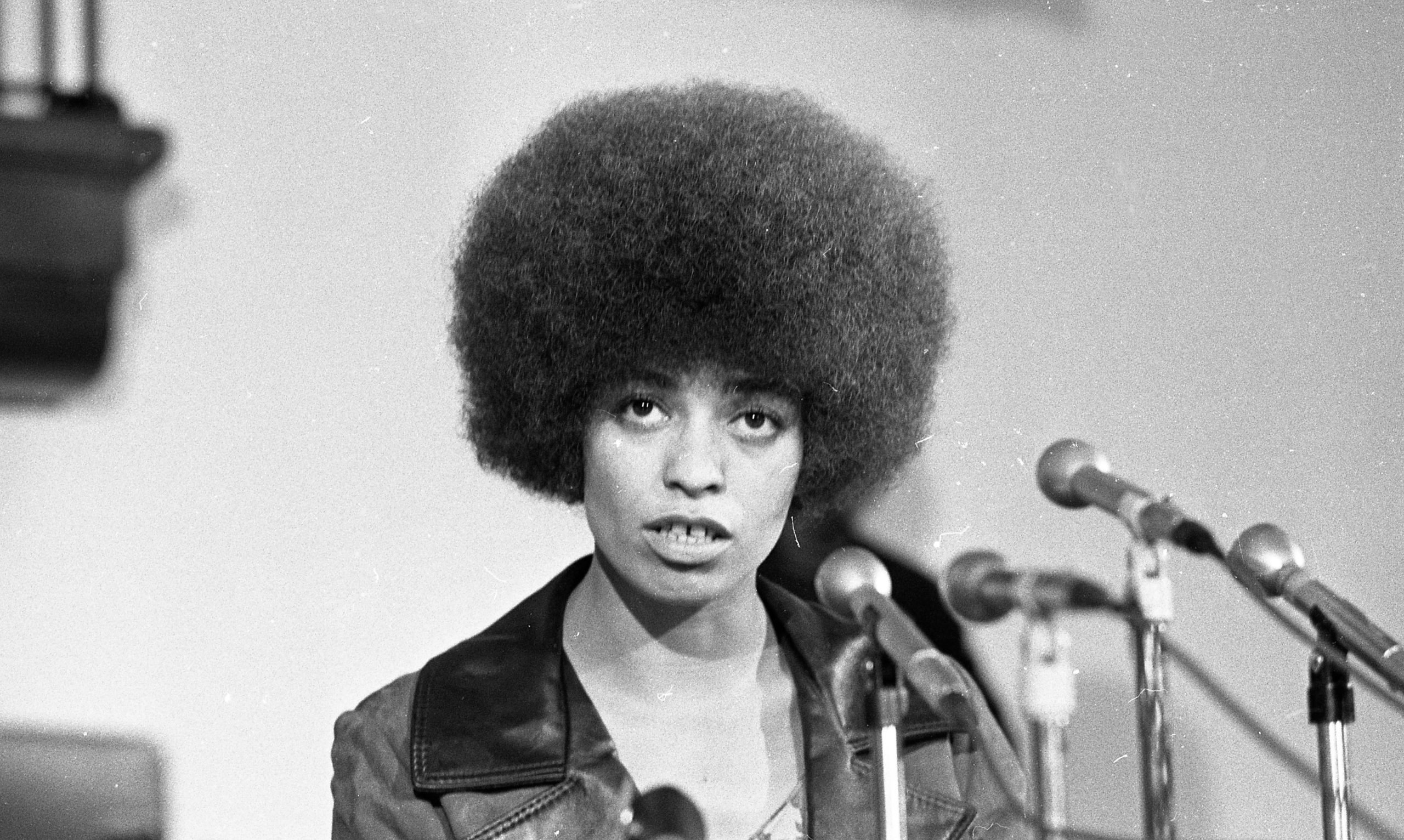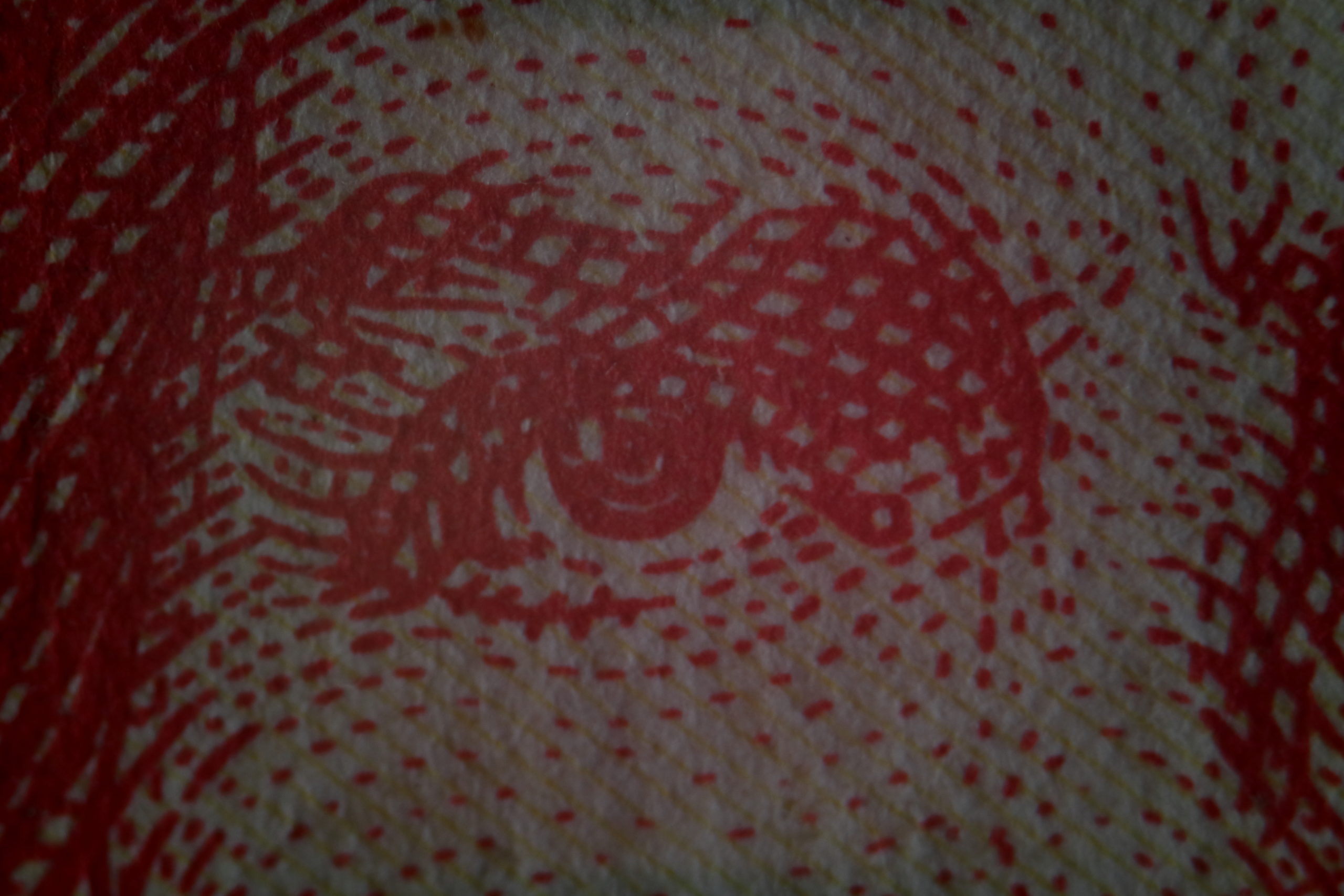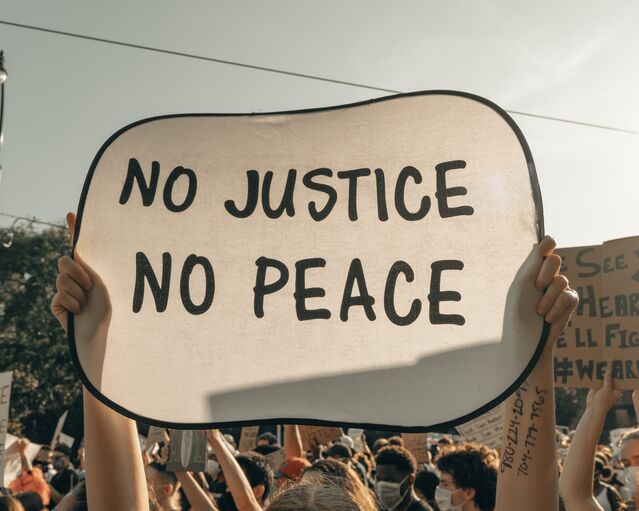Don't let them win.
The End of the Long March

Communists have been planning to topple America for a long time.
In Robert G. Nathan’s fictional account of the year 7859, the archaeologists excavating “N.Yolk” conclude that the natives were not a friendly or hospitable people.
There was excavated from the earth of a small island in the ocean just beyond the terminal landmass at n.Yolk, a hollow figure—or at least part of one—of what appears to be a giantess, or possibly a goddess, with one arm upraised in a threatening attitude. Within what is left of her shell,…our diggers uncovered a fragment of script, in blocked letters or signs, translated “Keep off the…”.
Theodor Bikel—the actor, singer and occasional comic—turned this into his side-splitting recording “Digging the Weans,” in which for example the name of the country’s capital is very carefully deciphered as Pound Laundry, derived from the verb “to wash” and a noun for a unit of weight that others read as “Ton.”
With that as a warning, I will attempt an archaeological exploration of the second viral epidemic that afflicted the U.S. in the summer of 2020. Not the respiratory bat virus that the Chinese authorities failed to contain in Wuhan, but rather the “intersectional” uprising that overturned the chain of command of institutions such as the New York Times, where an editor was fired for the crime of running the opinion column of a U.S. Senator in its opinion page.
The Rise of Critical Theory
This mind virus extracted abject declarations of culpability and attracted indulgence-seeking donations to Black Lives Matter, or whoever intercepts its funds. It unfolded amidst widespread rioting, vandalism and looting, whose damage was much more reparable than the harm to academic and professional standards across the U.S. accepted in the name of “diversity and inclusion.”
The term “intersectional,” which best labels the uprising—“woke” is the state it is supposed to induce—is perhaps clumsy but does usefully suggest that we must look for linked components, or “sections” of its vanguard.
The mobilization of resentment against the policing of the black population is the very last component in the sequence. This is obvious, because many years before the Ferguson, Minneapolis, or Atlanta protests, and long before the birth of the Black Lives Matter movement in 2013, we heard countless stories over many years that marked the successive stages of the intersectional conquest of American higher education.
In part, but only in part, it was a conquest of faculty appointments, research funds and facilities for the study of subjects previously unknown, such as Critical Race Theory, Decolonial [sic] theory, Post-colonial theory, Disability studies, Feminist political thought, Indigenous political thought, Queer theory, Trans theory, as well the women’s studies that were established much earlier, and the LGBTQ studies (which did not include the mysteriously different queer studies now in fashion) that started in 1986 at the City College of San Francisco before rapidly spreading.
As it happens, the subsequent stage of the intersectional conquest of academia was far more important politically. But that first conquest did have its own severe consequences for academia in its totality, in addition to inducing many innocent young people to study (often expensively) subjects whose expertise was unwanted by almost all employers.
This severe consequence was the drastic lowering of academic standards which the new subjects imposed for structural reasons, a decline in standards neither caused nor redeemable by those who taught those subjects in U.S. higher education.
First, in the nature of things, the new subjects did not have a literature that students could study, other than such things as novels with related themes or the more or less vehement polemics of advocates that had never been meant to be used as teaching texts, inevitably consisting of complaints and one-sided advocacy rather than the analysis of problems, the definition of testable hypotheses, and surveys of the data that can be adduced to prove or disprove them.
Hence the students of the new subjects simply cannot be evaluated on their knowledge of the discipline’s literature, except in the manner of the Chinese imperial examinations, in which success or failure depended on the ability to remember and write out exact quotations from the relevant texts, e.g., ancient manuals of archery in the Chinese case, and whatever polemics are chosen in the case at hand. But students adjusted easily enough, and learned to do as they were told, admiring the colonial, Black, female, homosexual, etc. subjects of the victimologies uncritically, and casting them as heroic rather than as mere victims.
In addition to the absence of a respectable body of literature for the students to study, there is an even more acute degradation of academic standards: the curtailment of any sort of critical analysis, the very essence of higher education in any field.
That is of course deeply ironical: each of the new subjects, after all, was born out of a severely critical assessment of the American condition, with imperialism generating “decolonial” or post-colonial studies, misogyny generating women’s studies, sexual intolerance generating LGBTQ studies, and so on.
But once they became study courses, they rigorously excluded any critical assessments of the victim-protagonists, invariably cast as deserving of unquestioning respect or even reverence—heroic warriors for justice, not to be subjected to any sort of critical analysis.
Thus it is impossible to study imperialism (in practice only White imperialism and not, say, the Ottoman variety) and point out in class that whites conquered the world from 1498 not because they were uniquely greedy and cruel as per the usual charge sheet, but because of their superior navigation and gunnery, the product of Western education in the rudiments of science and technology, elaborated from the engineering texts in the corpus of Latin (and later Greek) classical literature, conveyed to them by educated Christian clerics of both the Latin and the Orthodox creeds.
Nor would any Black Studies department allow a student to develop a theory relating the lower incomes of Blacks on average to the higher percentage born to single mothers themselves lacking a high-school education, any more than an LGBTQ department would allow a critical evaluation of, say, Queer theory, to determine the testability of its hypotheses—i.e., its epistemological standing as fit to be taught and studied at all.
The Fall of Standards
The imposition of a totally uncritical viewpoint in the new “victimology” fields of study left the way open to outright fabrication, now rampant in the literature.
One of these surfaced to a wide readership when it was cited in the New York Times’s 1619 Project articles, whose burden is that the United States and its economy were very largely financed by the profits of slavery. Or, to use the proper Marxist language, America was underwritten by the accumulated “surplus value” forcibly extracted from slave workers. (It is important for Marxists to impute evils to The System rather than merely to particular evil men.)
The 1619 series, needless to say, won a Pulitzer prize.
All of the above, however, was only a way to reach the real aim, which was to conquer academia literally, by suppressing freedom of speech to impose intersectional language. This would enable them to enforce the “woke” view of every question of any importance, academically relevant or not and, much more important, to use this ascendancy to dictate faculty appointments.
In many departments of many colleges and universities across the United States, these appointments were systematically if covertly denied to the “un-woke.” Even conservative Democrats were screened out, never mind Republicans, even if the subject to be taught was, say, French literature rather than, say, contemporary U.S. politics. Nor was it of any use to argue that an applicant’s membership in, say, the National Rifle Association was irrelevant to a teaching post in, say, Egyptology, because everything in the “woke” world is political (especially if presented as non-political).
What was irrelevant for the new masters of American higher education was any specific definition of academic requirements. For example, very few of the highly-promoted African studies programs often added to Black studies a language requirement, even though there are widely spoken African languages, such as Fulani in West Africa and Swahili in East Africa, as well as Amharic, which has a literature. At the very most, notably at Harvard, some effort is made to teach some African language to some students, but without perceptible effects, so that no African languages are known, except when a native speaker signs up to get an easy grade (a fraud to which I myself must plead guilty, having once smuggled an Italian language & literature A-level into my British university application).
Is a thorough knowledge of French needed to study Haiti’s successful revolt against slavery? No, of course not, even though all the documents are in French but for a British consular report or two and some Santo Domingo fragments in Spanish. Is it necessary to know Latin to study Roman history? No of course not—it is enough to be able to classify Roman society as “slave-holding” in the classic style of Soviet-speak now widely revived in U.S. academia, where standard Soviet terminology such as “imperialist,” “capitalist,” “monopolist,” and even “comprador,” plus of course “racist,” are heard all the time. Instead of submitting students to the effort that learning a language inevitably requires, language requirements are either circumvented by extreme laxity, or simply dismissed as a tawdry trick, whose only purpose is to keep out “students of color,” that being the devastating racism of low expectations.
This vast and vastly consequential conquest of most American colleges and universities was not achieved quickly, even if it may seem so to those who have not been paying attention.
It is indeed the result of a “long march through the institutions” (words inspired by Antonio Gramsci, the unchallenged intersectional prophet), as we know from the policing of language in American colleges and universities that was well underway a generation ago. It began decades before the insurrection of 2020 and the wholesale takeover of academic institutions, of most of the ambitious media, and of many professional associations.
The Long March
I remember how visiting European academics were surprised, and at first amused, by brazen demands from students, and even their colleagues that they—the distinguished grown-ups in the room—refrain from using perfectly ordinary and to them customary expressions such as miss or mademoiselle for a female student. Then there was the abrupt prohibition of the once-aspirational “Negro,” as in the “Negro violinist.” I heard as a newcomer in 1972 from a proudly self-described Negro academic, though by then the word had already been replaced by “Black.” “Afro-American” came even later, and all would be followed in turn by the emergence of the pronoun police (although “they” for an “it” came later still).
But who was it that decades ago set out and patiently persisted on the “long march through the institutions”? As noted, it was not black leaders whose preoccupations did not extend to the policing of pronouns and such. It was certainly not the Children’s Crusade of very passionate, slightly overweight girls and uncertain boys who now scream wildly aggressive slogans at police confident in their undeserved immunity. Nor was it their predecessors over the years, such as the WTO rioters in Seattle in 1999.
No, the leaders who did it all so patiently (and ultimately so effectively) are much more disciplined: they are the Old Hard-Core Left, a.k.a. the “red diaper” children and grandchildren and even great-grandchildren of the Stalinist stalwarts of the Communist Party of America, who had themselves been driven to hide below the rocks by the just-in-time McCarthy persecution that removed Communists from public life and the trade unions, making it possible for the United States to mobilize for the Cold War.
It was very quietly that they started their long march in the late 1970s, when finally, at long last, Marxism could sell, as the combined effects of globalization and structural change (including deregulation) started impoverishing the less-educated half of the American population. In a book documented on every page by Bureau of Labor statistics, The Endangered American Dream (1993), and then later in another titled Turbocapitalism (1998), I warned that trade-accelerated economic growth would enrich the USA but also impoverish too many Americans—including import-displaced industrial workers—for society to remain unaffected. Those books were rediscovered in 2016 by sundry luminaries (Google “Luttwak Richard Rorty” for dozens of articles), greatly enhancing my reputation among intellectuals with whom I have nothing else in common.
What I did not realize at the time was that a new generation of the Old Hard-Core Left had finally found the weak flank of American society which they could penetrate, subvert, and then dominate: the teaching staff of America’s colleges and universities, in part because of their inherited expertise in covert politics, and in part because in higher education the American Dream was more than endangered: it had turned into a triple-hit economic nightmare.
First the salaries of college professors, like those of airline pilots and others in regulated and staid activities, could not keep up with the accelerated income growth of more agile professions, let alone the entrepreneurs, from an abundance of quiet millionaires to the new high aristocracy of Silicon Valley.
Second, within academia there was a slow-motion but very successful transfer of power and money from teachers to bureaucrats, the “Deans” who slowly emerged from the ranks of clerks to become the real bosses of colleges and universities, best placed to take the big money for themselves.
To cite an example among very many, in the five universities of North Carolina there were in 2019 a total of 701 non-medical people on staff salaries that exceeded $200,000—hardly poverty wages. But of them, only 266 were professors as opposed to 435 bureaucrats.
Below the stratosphere (for academia) of the few $200,000 salaries were the thousands who earn less—often much less than plumbers, or even less than truckdrivers.
Moreover, the bureaucrats (or “Deans”) decisively subordinated many of the professors into an insecure and impoverished lower class by successfully pressing for the curtailment of tenure. And then, to ensure that tenure would not be granted for seniority on the job, more and more academics were employed on short-term contracts whose duration deliberately stopped short of the tenure point. Thus, a new class of journeymen was created, both poorly and insecurely paid.
Voilà! an academic proletariat—impoverished, insecure and embittered—was created within American academia, which the Old Hard Left could finally at long last mobilize for its long-cultivated and very grand project: to disestablish American society entirely.
Putting the Plan into Operation
The first step was to delegitimize its origins by teaching young Americans that they had been born into the worst society in the world, per the NYT’s 1619 Project, where the US of A is nothing but a slavery-funded empire of cruelty and greed. Hence it is obvious that the 1776 Declaration of Independence was really prompted by the threat of the anti-slavery movement in Britain (which did not yet exist, however).
Next, by de-legitimizing the founding fathers and political heroes from George Washington onwards as genocidal racists, whose other deeds are no more consequential than Hitler’s fondness for dogs. (On the Fourth of July 2020, the Washington Post accorded its largest article to an insignificant mediocrity who labelled Washington a racist terrorist.)
The de-legitimization of the U.S. economy is not much of a struggle with college-age Americans because it is still energy-based, desperately awaiting the Green New Deal that will prohibit non-commercial pick-up trucks, motorboats, non-authorized flying & much else.
Next comes the delegitimization of the entrepreneurial classes and the criminalization of their wealth, from “the billionaire” class, which must be abolished by steep wealth taxes, to the “millionaire” class, which must be harshly taxed. “There is plenty of money in this country, but it is in the wrong hands, and we need to fix that,” said Bill de Blasio in 2019.
With all that cleared out of the way, and the institutions of government re-staffed with “woke” judges, bureaucrats, IRS agents and of course domestic intelligence agents (you cannot have a proper wealth tax without a bit of fingernail-pulling, to uncover hidden wealth), the wholesale redistribution of American wealth could start with reparations for slavery to forty million deserving Black recipients who can hardly be fobbed off with less than a million each.
Next would come the other victims of American cruelty, such as the Mogadishu Somalis dear to a distinctively robed Congresswoman, then the list of all those who have suffered from American racism, cruelty, and greed around the world—such as the bombed people of Iraq for example.
Who could possibly want such a dystopia? Do such people really exist? Yes, it is true that the red-diaper babies are an exotic lot. But I once met a classic example, whose longevity in prominence does not make her unrepresentative. It was the year 1962 and I was a student at the London School of Economics, having never been to America or met any Americans. I was in progress from the Banat of Transylvania to Palermo, Sicily, to a British boarding school and the British Army via its cadet corps, when I received a working-holiday invitation to Helsinki from the head of the union of economics students, and the Finnish sugar monopoly, which asked for very little real work.
I was looking forward to the pleasures of the unexpected in what was still then an exotic country barely emerged from wartime destructions, impoverished by reparations extracted by the Soviet Union, remarkably insular.
Upon arrival I was curtly informed that I had been invited because of my reputation as a brawler. The Soviet-operated “World Federation of Democratic Youth” and the Soviet-operated “International Union of Students” had invited themselves to Helsinki for a “World Youth Festival.” The Finnish Union of Students was asked to issue an invitation but flatly refused, until forced to issue it nonetheless by the government, itself effectively threatened by Moscow which then had Peace Treaty rights in Finland.
More than thirty thousand mostly Communist students and student organizers of all ages would soon arrive, bent on asserting their presence in Helsinki by assertive marches and demonstrations, in a much more compact city than it now is (the population was only 400,000 or so, with a prevalence of women among the middle-aged because of wartime casualties).
Before the rioting started that would confine them to heavily guarded arena events, and heavily guarded marches, the new arrivals spilled into the main avenue of the city and into its modest array of bars and restaurants. There would be none of that later on.
There, in a bar among the many French and Italian students, and older Russian “students” with steel false teeth, I spotted a very exotic group in outlandish youth gear I had never seen before. I asked one whence they came. “The United States,” was the shockingly unexpected answer.
I asked him how come Americans were participating in a Soviet Cold War propaganda operation, and the answer was that the United States was an imperialist and capitalist and utterly unjust society whose courts did the bidding of the rich and whose policemen enforced capitalist property privileges. I was told that all progressive Americans wanted to abolish the U.S. and replace it with the Union of American Soviets, helpfully adding that the word Soviet merely meant Council, which is why the USSR was the best-governed country in the world—it was ruled by “councils”.
Yet more exotic was a rather attractive black girl sitting next to him, whom I recognized years later as Angela Davis, then a student at an East German university and daughter of Sallye Bell Davis, national officer and leading organizer of the Southern Negro Youth Congress, a Communist front organization. The younger specimens who are now ready and waiting, who jumped on the BLM movement and ride it like a horse to their destinations, starting with the telling demand for the abolition of police forces, are less colorful than Davis. But they too are red-diaper babies, just as she was. So, as it turns out, the United States does have a dynastic aristocracy: one bent on its own demolition.
The American Mind presents a range of perspectives. Views are writers’ own and do not necessarily represent those of The Claremont Institute.
The American Mind is a publication of the Claremont Institute, a non-profit 501(c)(3) organization, dedicated to restoring the principles of the American Founding to their rightful, preeminent authority in our national life. Interested in supporting our work? Gifts to the Claremont Institute are tax-deductible.
Woke revolutionaries are mostly rich kids playing at radicalism.
BLM isn’t hiding its Marxism.
How Marxist ideologues took over our culture.
America must own its founding principles, or be destroyed.
BLM and Antifa are determined to bring the country to its knees. We should act accordingly.






